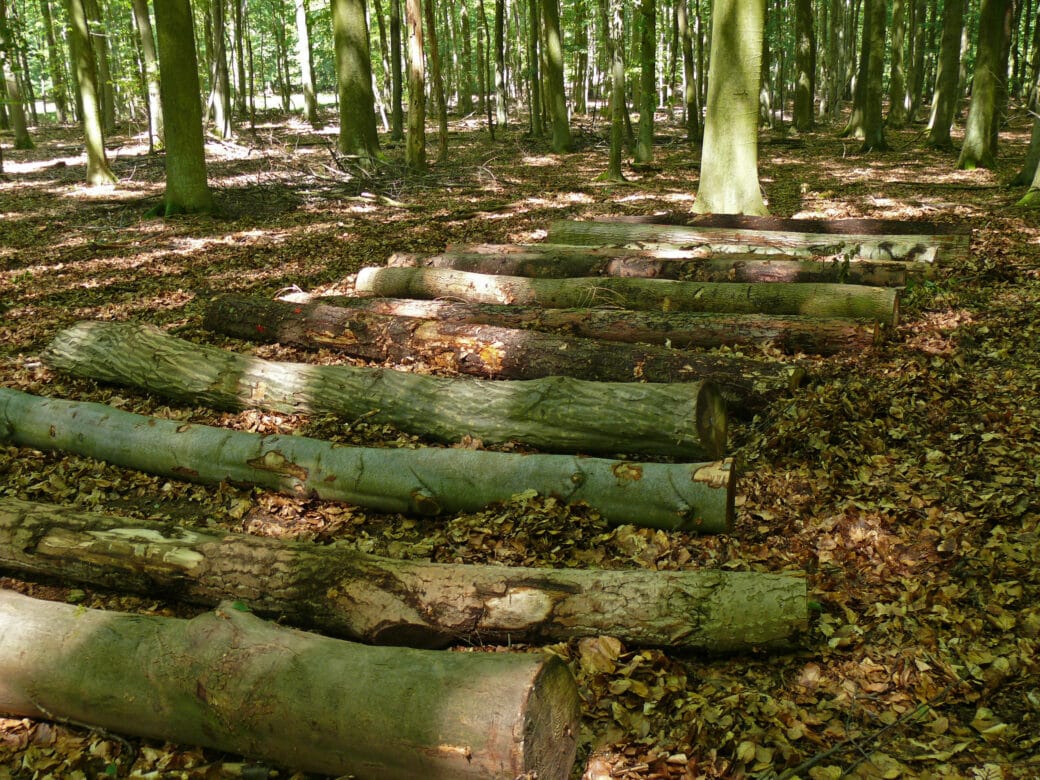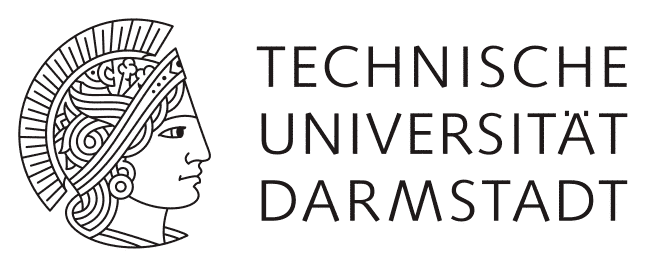Long-term Monitoring of Deadwood (BELongDead)
The longterm experiment was established by Prof. E.-D. Schulze (emeritus, MPI Biogeochemistry in Jena) in the second phase and is coordinated by Prof. Dr. Wolfgang Weisser (Technical University of Munich, Chair for Terrestrial ecology) since the third phase.
BELongDead is not a funded project but an experiment that allows scientists from various fields of interest to investigate ecological degradation processes of dead wood.

- What is the meaning of deadwood in ecosystem processes?
- What is the influence of the surrounding habitat?
- How is the settlement of species and the decomposition of deadwood?
- How does decomposition affect the carbon cycle and microorganisms on the soil surface?
2008 the following tree species were put into each forest VIP in the three regions of the Biodiversity Exploratories in three replicates (in total 1,140 deadwood logs):
Beech, oak, maple (sycamore maple, mountain maple and field maple in mixture), lime tree, cottonwood tree, hornbeam, ash, birch and cherry (one log per VIP), as well as pine, larch, Douglas fir, and spruce.
Each deadwood log has a center diameter of 30cm and a length of 4m.
At the beginning of the experiment, a soil sample was taken next to each log, dried and stored, and a log slice was cut and stored.
| Project name | Supervisor, Institution | Content |
| Arthropods since 2011 | Blüthgen (Technische Universität Darmstadt)
Weisser (Technical University Munich) |
Population density and diversity saproxylic arthropods,
monitoring saproxylic insects |
| BEL-FFD-HZG since 2014 | Hofrichter, Kellner (TU Dresden, International Gratuate School Zittau)
Buscot (Helmholtz Centre For Environmental Research Halle) Bässler (Bavarian Forest National Park) Hoppe (Julius-Kühn-Institute) |
Influence of surrounding ecosystem to wood decomposition, procedure of substrate succession, Influence of microorganisms to wood
decomposition and ecosystem processes, diversity of fungi and bacteria in deadwood and the expression of genes relevant to wood degradation |
| Project name | Supervisor, Institution | Content |
| Arthropoden I (2009-2014) | Weisser, Gossner (Technical University Munich) | Population density and diversity saproxylic arthropods,
infestation by Trypodendron and Xyleborus, monitoring saproxylic insects
|
| Arthropoden II (2009-2014) | Linsenmair (emeritus MPI BGC Jena
Steffan-Dewenter (University Würzburg) |
Investigation of saproxylic arthropods in canopy and ground dead wood |
| Arthropods (2014-2017) | Weisser (Technical University Munich) | Population density and diversity saproxylic arthropods,
monitoring saproxylic insects |
| Arthropods (2017-2020) | Weisser (Technical University Munich) | Population density and diversity saproxylic arthropods,
monitoring saproxylic insects |
| Arthropods (2020-2023) | Blüthgen (Technische Universität Darmstadt)
Weisser (Technical University Munich) |
Population density and diversity saproxylic arthropods,
monitoring saproxylic insects |
| BELongDead (2009) | Schulze (Emeritus, Max Planck Institute of biogeochemistry)
Weisser (Technical University Munich) |
Initial measurements at the beginning of the project (eg diameter, trunk cover) |
| BEL-FFD-HZG (2014 – 2017) | Hofrichter, Kellner (TU Dresden, International Gratuate School Zittau)
Krüger, Hoppe (Helmholtz Centre For Environmental Research Halle) Bässler (Bavarian Forest National Park) |
Diversity of fungi and bacteria in deadwood and expression of genes relevant for wood-degrading |
| BEL-FFD-HZG II (2017 – 2020) | Hofrichter, Kellner, Leonhardt (TU Dresden, International Gratuate School Zittau)
Hoppe, Moll (Helmholtz Centre For Environmental Research Halle) Bässler (Bavarian Forest National Park) |
Diversity of fungi and bacteria in deadwood and expression of genes relevant for wood-degrading |
| BELongDead – Stoffflüsse (2009 – 2014) | Matzner (University Bayreuth) | Measurement of stem flow and release of DOC and DON |
| FRASS (2011 – 2014) | Maraun (University Göttingen) | Reproductive behavior of oribatid mite species on bark along a land use gradient |
| Funwood (2009 – 2011) | Bauhus, Kahl (University Freiburg) Buscot, Krüger (Helmholtz Centre For Environmental Research Halle) Hofrichter (International Gratuate School Zittau)Otto (University Leipzig) |
Effects of the intensity of forest management on the diversity of wood-decaying fungi and dead wood decomposition, fungus monitoring |
| Funwood II (2011 – 2014) | Bauhus, Kahl (University Freiburg)
Krüger, Hoppe (Helmholtz Centre For Environmental Research Halle) Otto (University Leipzig) Hofrichter, Kellner (TU Dresden, International Gratuate School Zittau) |
Effects of the intensity of forest management on the diversity of wood-decaying fungi and dead wood decomposition, fungus monitoring |
| Funwood III (2014 – 2017) | Bauhus, Kahl (University Freiburg)
Krüger, Hoppe (Helmholtz Centre For Environmental Research Halle) Otto (University Leipzig) Hofrichter, Kellner (TU Dresden, International Gratuate School Zittau) |
Effects of management intensity of Forests, tree species and fungal diversity to deadwood and their ecosystem processes |
| Funwood IV (2017-2020) | Jehmlich (Helmholtz-Centre for Environmental Research Leipzig)
Noll (Coburg University of Applied Sciences and Arts) |
Functional diversity in decomposer communities, influence of fluctuating temperatures on decomposer communities, influence of forest management intensity and tree species to decomposer communities and decomposition rates |
| Woodsoil (2017-2020) | Borken (University Bayreuth)
Persoh (University Bochum) |
Nutrient translocation towards fungi communities in soil, functional diversity of saprotrophic fungi, microbial biomass and activity |









